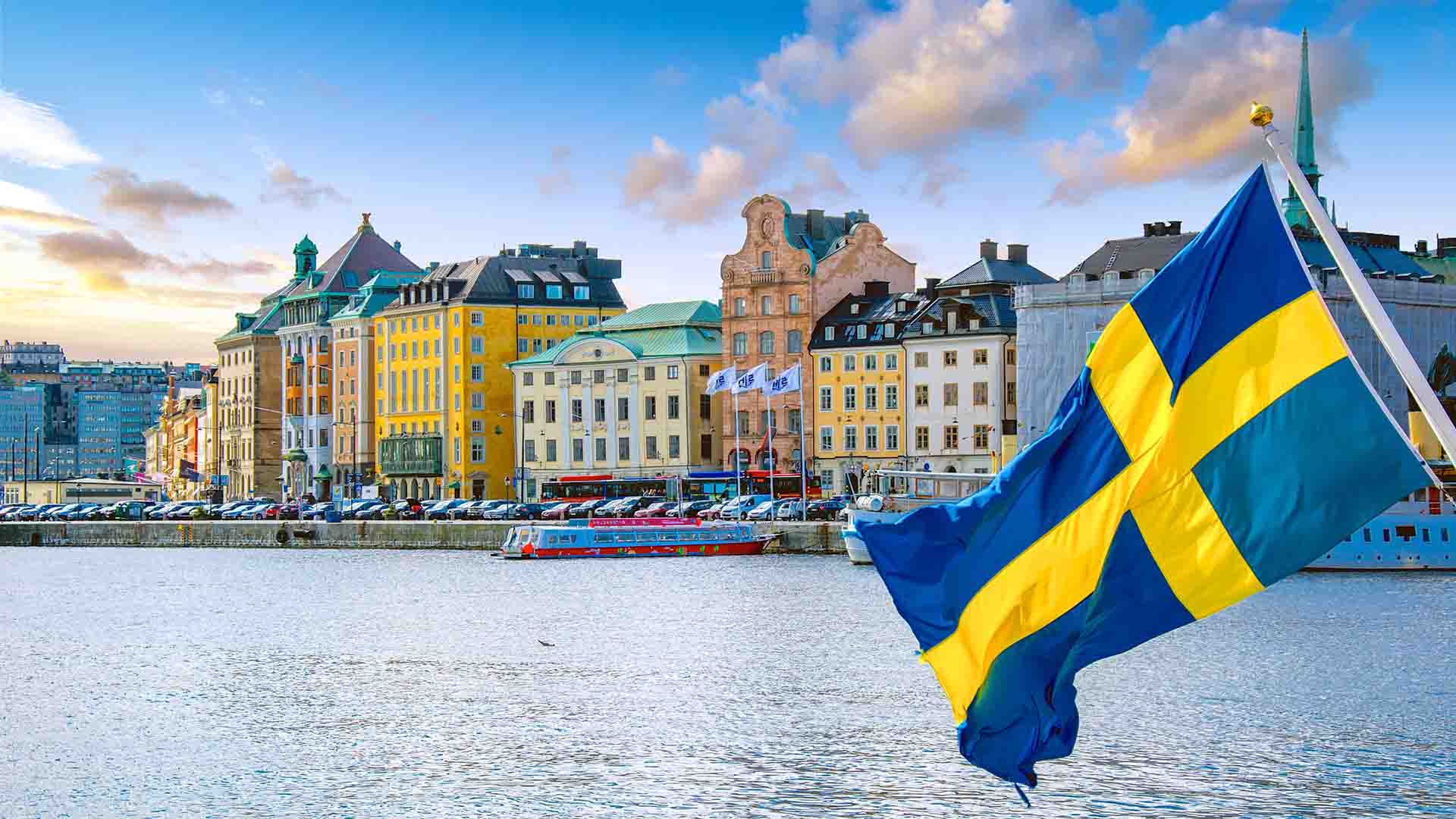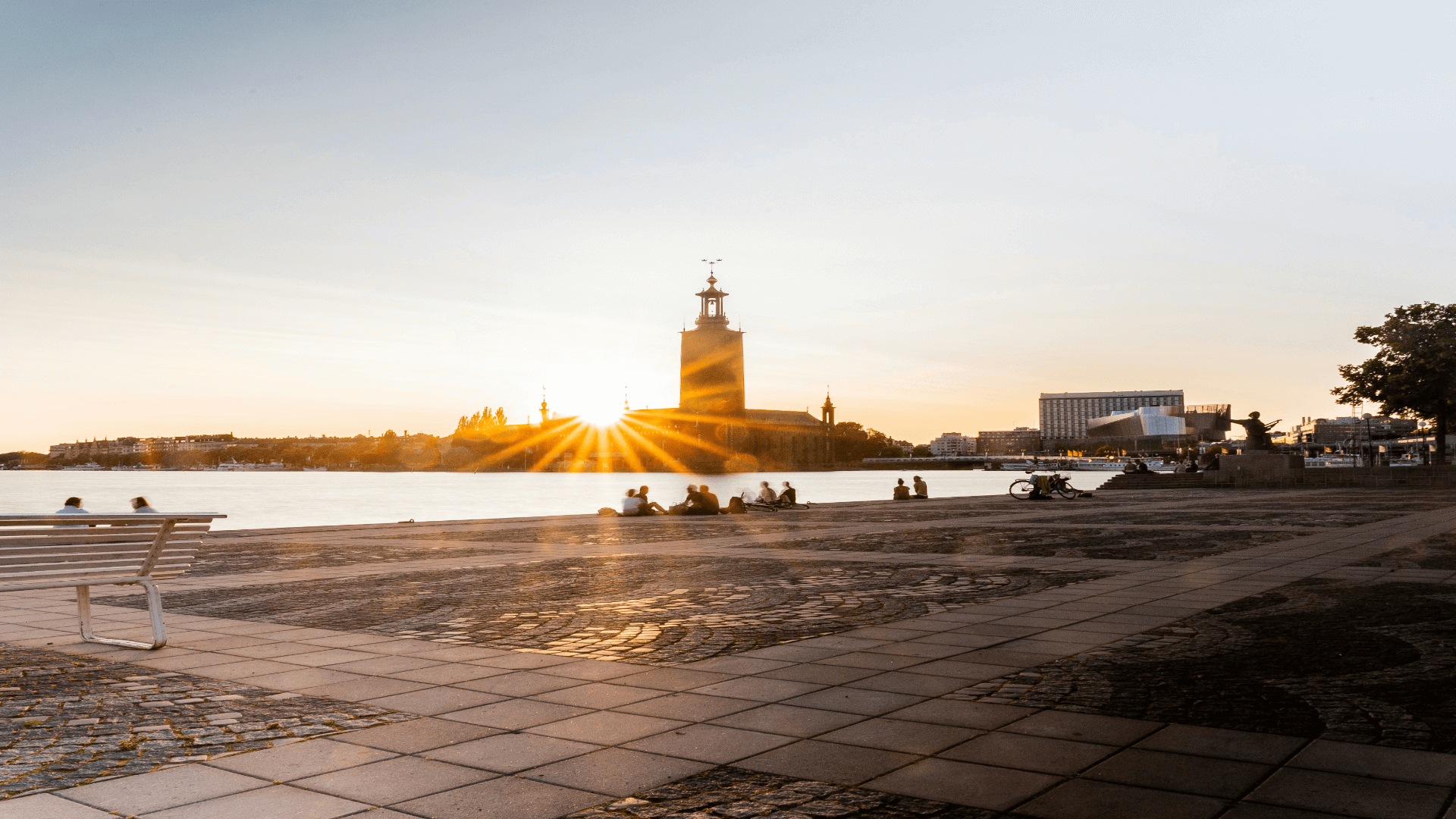Home » Sweden Destination Guide
Sweden Destination Guide
It’s no surprise, then, that Sweden is a popular destination across all our multi-country Luxury Scandinavia Tour Packages. And for immersive experiences in a single Nordic nation, travelers from across North America love our Sweden Private Tours.
If Sweden is on your travel radar, this destination guide provides the essential information you need to plan an unforgettable trip. Our US-based team is here to help however we can, so please just get in touch with any questions you may have.
For now, let’s get started on this Sweden destination guide!
Why Visit Sweden?
Sweden is a land of natural beauty, vibrant cities, and rich cultural heritage. Whether you’re drawn to the cosmopolitan allure of Stockholm, the historic settlements of Sigtuna and Uppsala, or the snowy expanses of Lapland, Sweden promises an adventure that’s both unique and unforgettable.
And with captivating natural phenomena like the Midnight Sun and Northern Lights occurring at various points of the year, this amazing country offers an unparalleled mix of experiences for every traveler.

What Should I Know Before Visiting Sweden?

Looking for some bite-sized essential information for first-time visitors to Sweden? The following seven points are the perfect place to start:
- Currency: The official currency is the Swedish Krona (SEK). Credit and debit cards are widely accepted, but it’s useful to have some cash for smaller purchases.
- Language: Swedish is the official language, but English is widely spoken and understood, especially in larger cities and tourist areas.
- Climate: Sweden has a diverse climate ranging from temperate in the south to subarctic in the north. Be prepared for varying weather conditions depending on the season and region.
- Travel Documents: U.S. citizens do not need a visa for stays up to 90 days. Ensure your passport is valid for at least three months beyond your intended departure date.
- Transportation: Sweden has an efficient and extensive public transportation system, including trains, buses, and ferries.
- Tipping: Tipping is not mandatory, but it’s appreciated for good service. Rounding up the bill or adding 5-10% is common practice.
- Emergency Number: Dial 112 for all emergencies, including medical assistance, fire, and police.
Best Places to Visit in Sweden
Narrowing down the best places to visit in Sweden is hard because there are just so many! But the picks below are some of our favorites and worthy of any itinerary. To read more about these places and more, check our blog Where is the Best Place to Visit in Sweden?
Stockholm
The capital city of Stockholm is an archipelago of 14 islands connected by over 50 bridges. Known as the “Venice of the North,” Stockholm boasts a stunning combination of historic and modern attractions. Key highlights include:
- Gamla Stan: The old town with cobblestone streets, colorful buildings, and the Royal Palace.
- Vasa Museum: Home to the well-preserved 17th-century warship, Vasa.
- ABBA Museum: A must-visit for fans of the legendary Swedish pop group!
- Skansen: The world’s oldest open-air museum showcasing Swedish history and culture.
Swedish Viking Settlements
The Viking Age is an integral part of Scandinavia’s history, and there are numerous settlements and museums to learn more about this period in Sweden. Birka, widely regarded as one of the country’s first cities, is conveniently located west of Stockholm on the shores of Lake Mälaren.
You can travel to Birka Vikingastaden by boat or ferry, allowing you to take in some of the area’s beautiful scenery before and after your Viking experience. Be sure to read our picks for the best places to experience Viking history in Stockholm for even more recommendations.
Sigtuna and Uppsala, both to the north of Stockholm, are two more fascinating locations to immerse yourself in Swedish history.
Malmö
Situated in the southern part of Sweden, Malmö is a diverse city with a mix of historic and modern influences. Key attractions include:
- Turning Torso: The tallest building in Scandinavia.
- Malmö Castle: A historic fortress and museum complex.
- Oresund Bridge: The iconic bridge connecting Sweden and Denmark.
- Ribersborg Beach: A beautiful spot for relaxation and recreation.
Ystad
Located on the south coast, a short distance from Malmö, Ystad is an enchanting blend of medieval charm, historic sites, and idyllic landscapes. The old town is home to picturesque, pastel-colored, half-timbered houses lining cobblestone streets. If you’re looking for a cozy, scenic Swedish coastal town to spend time in, Ystad is calling your name!
And there’s an added bonus for fans of Henning Mankell’s Wallander crime series — Ystad is where the television adaptation of the books was filmed! You can join a behind-the-scenes tour and dive deeper into the Wallander experience on a visit to Ystad Studios.
What is the Best Time to Visit Sweden?
Sweden is a year-round destination with each season offering unique experiences. The milder temperatures of April to September make this the most popular time to visit Sweden, which is when Discover Scandinavia Tours runs our standalone Sweden Private Tours.
What to Expect in Spring (April and May)
- Weather: Temperatures slowly creep up from winter lows (40 to 55°F / 4 to 13°C).
- Activities: See the blooming wildflowers and enjoy quieter tourist spots before peak season.
- Events: Easter festivities and Walpurgis Night celebrations (April 30) including traditional spring folk songs and bonfires.
What to Expect in Summer (June to Early September)
- Weather: Mild to warm temperatures (60 to 75°F / 15 to 24°C).
- Activities: Enjoy outdoor activities like hiking, kayaking, and island hopping. Experience the magical lights nights of the Midnight Sun.
- Events: Midsummer celebrations, music festivals, and outdoor markets.
What to Expect in Autumn (October and November)
- Weather: Cool and crisp (35 to 55°F / 2 to 13°C).
- Activities: Witness the stunning fall foliage and enjoy harvest festivals.
- Events: Traditional Swedish crayfish parties and All Saints’ Day (between October 31 and November 6).
Is Sweden Worth Visiting in the Winter?
Absolutely! While Discover Scandinavia Tours doesn’t offer standalone Sweden tours in the winter, our multi-country Luxury Scandinavia Tour Packages are an excellent way to experience Sweden’s and the Nordic region’s winter wonders.
Nordic Silver Winter Tour
Our Nordics Silver Winter tour includes visits to Sweden, Norway, and Denmark over 13 days, offering a perfect blend of winter activities and cultural experiences. Highlights include:
- Aurora Hunting: Chase the mesmerizing Northern Lights in Sweden and Norway.
- Cultural Activities: Enjoy hot saunas, local cuisine, and tours with local guides.
- Christmas Markets: Explore festive markets and beautiful Christmas lights.
Nordic Gold Winter Tour
Our 18-day Nordics Gold Winter tour covers Sweden, Norway, Denmark, Finland, and Estonia, providing an even more immersive winter adventure. This excursion includes all the experiences in the Silver tour but with additional time spent in Tallinn, Estonia’s charming capital city, and the Finnish must-sees of Helsinki and Porvoo.
Looking to learn more about Nordic cultural experience before your trip? Read our blog Five Unique Cultural Experiences You Can Enjoy In Scandinavia when you have finished here.

When To Visit Sweden: A Month-by-Month Guide
January
- Weather: Cold and snowy (North: 5 to 15°F / -15 to -9°C, South: 25 to 35°F / -4 to 2°C).
- Activities: Northern Lights tours, snowmobiling, and ice fishing.
- Events: Winter festivals and Sami cultural events.
February
- Weather: Cold with increasing daylight (North: 5 to 20°F / -15 to -7°C, South: 25 to 35°F / -4 to 2°C).
- Activities: Dog sledding, snowmobiling, and visiting the Ice Hotel.
- Events: Stockholm Design Week and Sami National Day.
March
- Weather: Milder but still wintery (North: 15 to 30°F / -9 to -1°C, South: 30 to 40°F / -1 to 4°C).
- Activities: Early signs of spring blooming.
- Events: Easter markets and celebrations.
April
- Weather: Warming up with longer days (North: 25 to 40°F / -4 to 4°C, South: 35 to 50°F / 2 to 10°C).
- Activities: Hiking and exploring colorful landscapes.
- Events: Walpurgis Night and Valborg celebrations.
May
- Weather: Pleasant and mild (North: 35 to 55°F / 2 to 13°C, South: 45 to 65°F / 7 to 18°C).
- Activities: Biking, kayaking, and enjoying the spring blossoms.
- Events: Labor Day and Ascension Day festivities.
June
- Weather: Warm and sunny (North: 45 to 65°F / 7 to 18°C, South: 55 to 75°F / 13 to 24°C).
- Activities: Midsummer celebrations, hiking, and island hopping.
- Events: Midsummer Festival and music festivals.
July
- Weather: Typically the warmest month (North: 50 to 70°F / 10 to 21°C, South: 60 to 80°F / 15 to 27°C).
- Activities: Swimming, boating, and exploring the archipelagos.
- Events: Gothenburg Culture Festival and Stockholm Pride.
August
- Weather: Warm and pleasant (North: 50 to 70°F / 10 to 21°C, South: 55 to 75°F / 13 to 24°C).
- Activities: Outdoor adventures and cultural festivals.
- Events: Malmö Festival and crayfish parties.
September
- Weather: Cooling down from summer highs (North: 40 to 55°F / 4 to 13°C, South: 50 to 65°F / 10 to 18°C).
- Activities: Hiking, berry picking, and enjoying the start of the fall colors.
- Events: Harvest and culinary festivals.
October
- Weather: Crisp and cool (North: 30 to 45°F / -1 to 7°C, South: 40 to 55°F / 4 to 13°C).
- Activities: Exploring forests and historical sites.
- Events: All Saints’ Day and Stockholm Jazz Festival.
November
- Weather: Cold and daylight hours falling (North: 20 to 35°F / -7 to 2°C, South: 30 to 45°F / -1 to 7°C).
- Activities: Preparing for winter sports and Christmas markets.
- Events: Christmas market openings and the start of ‘cozy’ season.
December
- Weather: Cold and dark, but with festive cheer (North: 10 to 25°F / -12 to -4°C, South: 25 to 35°F / -4 to 2°C).
- Activities: Christmas markets, holiday celebrations, and winter sports.
- Events: Lucia Day, Christmas, and New Year’s Eve festivities.
Take a deeper dive into this all-important topic by reading our blog When is the Best Time to Visit Sweden?
Where to See the Midnight Sun in Sweden
The Midnight Sun is a natural phenomenon occurring in the summer months where the sun remains visible at midnight. However, the only true Midnight Sun is possible above the Arctic Circle.
For the complete experience, then, you need to head to places like Kiruna and Abisko. Here, you can enjoy 24 hours of daylight from late May to mid-July, perfect for outdoor adventures and experiencing the unique Arctic landscape.
While the Midnight Sun doesn’t technically reach southern Sweden, cities like Stockholm and Malmö still experience long daylight hours during the summer. In Stockholm, you can enjoy up to 18 hours of daylight in June, making it an ideal time to explore the city and its surroundings. Around the summer solstice, the sun doesn’t set until after 10 pm and rises again at 3:30 am, so there’s hardly any time for darkness to set in.
This leads to an important travel tip for Swedish summers — bring a sleeping mask!
Is the Midnight Sun a priority experience for you? We think you’ll appreciate our blog Planning Your Trip to Scandinavia During the Midnight Sun.
What Can I Eat in Sweden as a Tourist?
Traditional Dishes
- Meatballs (Köttbullar): Served with lingonberry sauce and mashed potatoes.
- Gravlax: Cured salmon often served with mustard sauce and dill.
- Smörgåsbord: A buffet-style meal with a variety of cold and hot dishes.
- Räksmörgås: Open-faced shrimp sandwich on rye bread.
Sweets and Desserts
- Kanelbullar: Cinnamon buns, a staple in Swedish fika (coffee breaks).
- Princess Cake (Prinsesstårta): A layered sponge cake with cream, jam, and green marzipan.
- Semla: A cream-filled bun traditionally eaten before Lent.
Beverages
- Coffee: Sweden has a strong coffee culture, often enjoyed during fika.
- Aquavit: A traditional Scandinavian spirit flavored with herbs and spices.
- Lingonberry Juice: A popular non-alcoholic beverage made from lingonberries.
Hungry for more? Check out our blog all about food in Scandinavia!

How Many Days Do You Need to See Stockholm?
For most travelers, three days is the perfect amount of time to experience the best that Stockholm has to offer. This is why our pre-planned itineraries featuring Stockholm spend three days exploring in and around the city. Of course, this duration can vary depending on your interests, which is something we can take into account with our “Add Your Touch” Custom Tours of Scandinavia.
A sample three-day itinerary in Stockholm could look something like this:
Day One
- Explore Gamla Stan.
- Visit the Royal Palace and Storkyrkan (Stockholm Cathedral).
- Enjoy dinner at a traditional Swedish restaurant.
Day Two
- Tour the Vasa Museum and ABBA Museum.
- Stroll through Djurgården and visit Skansen.
- Take a boat tour of the archipelago.
Day Three
- Discover modern Stockholm at Sergels Torg and Norrmalm.
- Visit the Stockholm City Hall.
- Explore the Nobel Prize Museum.
Read the itinerary for our Must See Series: Sweden in a Week tour to learn more about the three days you can spend in Stockholm on our carefully crafted vacation package.
Is Sweden Really as Safe as People Say It Is?
Yes! Sweden regularly ranks as one of the top ten safest countries in the world, and areas visited by tourists are among the safest in the country. Of course, you still need to take the same precautions against petty crime as you would in any other destination; otherwise, you can explore this remarkable country with peace of mind!
Some key points about Safety in Sweden include:
- Low Crime Rates: Sweden has low crime rates, especially violent crime.
- Efficient Emergency Services: Well-equipped and responsive emergency services should an incident occur.
- Political Stability: Sweden enjoys a high level of political stability and a well-functioning legal system.
Sweden Packing Tips
Packing for Spring and Summer in Sweden
- Layers: Lightweight layers for fluctuating temperatures.
- Rain Jacket: For occasional summer showers.
- Comfortable Shoes: Ideal for exploring cities and nature trails.
- Swimwear: For swimming and sauna experiences.
Packing for Autumn and Winter in Sweden
- Warm Clothing: Insulated jackets, gloves, hats, and scarves.
- Thermal Layers: Essential for outdoor activities.
- Waterproof Boots: For snowy and wet conditions.
- Light Layers: For indoor heating contrasts.
Book Your Spot on One of Our Luxury Sweden Tours
We hope this Sweden destination guide has inspired you to take that dream trip to Scandinavia. Browse our range of Sweden Private Tours and Luxury Scandinavia Tour Packages to take your vacation planning to the next level.
If you’re considering a multi-country tour, be sure you read our Iceland, Finland, and Norway destination guides too. And remember, you can always get in touch with our US-based team if you need more information. We’re here to help however we can.
